Fleet decision-makers have shared their experiences of decarbonization challenges, including the lack of EV charging infrastructure funding and the high cost of electrifying fleets.
At the February meeting of the Fleet200 Strategy Network a table debate included the following comments:
“I work for a local authority. Several years ago we declared a climate emergency. We had to decarbonise. But now the wind direction has shifted, and agendas have changed. So, as a case in point, we also must save money with the result I have no budget for charging infrastructure. Plus, there’s been a change of executive team, and it wants to know our decarbonisation philosophy and emergency plan. It wants a zero-carbon council by 2030. But it hasn’t specified the same for its fleet. Nuances in language can change strategies.”
“Our target for carbon neutral was 2030, but now it’s 2040 because we don’t see it as a business priority, since adding charging points to rented or leased depots is difficult. And cost is a significant element, our business is growing at a fast pace and it comes at a growing cost, which is increasingly unbearable.”
“There’s talk of hydrogen being the solution for heavier vehicles, but it’s years away from being viable. I work in fire and rescue and there are decarbonisation solutions when considering fire tenders, but it comes with operational challenges. A tender could be on site for an hour or two to three days.
“Plus, an electric tender is three times the cost to buy as an ICE model. Hydrogenated vegetable oil (HVO) as an alternative fuel is a stepping stone to hydrogen, but I’d need to bunker fuel – and that presents its own challenges.”
“Once electric LCV ranges get to a consistent 200-miles max, electrification from a vehicle standpoint becomes relatively simple. Infrastructure remains problematic. I could put EV charging on my sites tomorrow, but I don’t have the energy supply and the Distribution Network Operator (DNO) costs makes it very difficult.”
Fleet decision-makers have shared their experiences of decarbonization challenges, including the lack of EV charging infrastructure funding and the high cost of electrifying fleets.
At the February meeting of the Fleet200 Strategy Network a table debate included the following comments:
Challenges in decarbonisation
“I work for a local authority. Several years ago we declared a climate emergency. We had to decarbonise. But now the wind direction has shifted, and agendas have changed. So, as a case in point, we also must save money with the result I have no budget for charging infrastructure. Plus, there’s been a change of executive team, and it wants to know our decarbonisation philosophy and emergency plan. It wants a zero-carbon council by 2030. But it hasn’t specified the same for its fleet. Nuances in language can change strategies.”
“Our target for carbon neutral was 2030, but now it’s 2040 because we don’t see it as a business priority, since adding charging points to rented or leased depots is difficult. And cost is a significant element, our business is growing at a fast pace and it comes at a growing cost, which is increasingly unbearable.”
“There’s talk of hydrogen being the solution for heavier vehicles, but it’s years away from being viable. I work in fire and rescue and there are decarbonisation solutions when considering fire tenders, but it comes with operational challenges. A tender could be on site for an hour or two to three days.
“Plus, an electric tender is three times the cost to buy as an ICE model. Hydrogenated vegetable oil (HVO) as an alternative fuel is a stepping stone to hydrogen, but I’d need to bunker fuel – and that presents its own challenges.”
“Once electric LCV ranges get to a consistent 200-miles max, electrification from a vehicle standpoint becomes relatively simple. Infrastructure remains problematic. I could put EV charging on my sites tomorrow, but I don’t have the energy supply and the Distribution Network Operator (DNO) costs makes it very difficult.”
“We can’t win a contract unless we operate HBO trucks, so all 19 sites have it bunkered. Plus, you can’t get a last-mile delivery contract unless it’s in an EV. A lot of what defines our strategy is customer driven.”
“Operating smaller commercials in a facilities management role means we are in a fairly privileged position. We started our EV transition in 2019 and 6,000 of our 7,000 vehicles are running on electric. This was helped by our chief executive giving a ‘thou shalt’ directive, with targets and funding.
“There are still challenges. Every vehicle goes to the drivers’ homes and as well as not every home having a charger, not every driver wants to put the van on the drive. Their car takes precedence for insurance purposes.”
“We’ve got an electric first policy. If it can go electric it goes electric. And the business or contract manager has to provide a good reason not to. We use telematics mileage data, and, maybe a vehicle goes beyond its maximum range once a month, it’s not enough to stop the transition to EV.”
Electrification and cost concerns
“Larger vehicles remain a challenge, so while we have a net-zero target of 2025 I think we’ll be 80% there, partly because electric alternatives of the remaining ICE vehicles don’t exist. The use of HVO does seem to be a bridging solution. It can have a dramatic impact on emissions but doesn’t change how you operate too much. But onsite energy supply is becoming the biggest sticking point. Short of a solution that is cost effective and entails minimum disruption, the typical response is, we can’t afford it so let’s not bother.”
“If you have a decarbonisation strategy it is essential it becomes part of running a business – ‘business as usual’ - in the same way as putting on the lights or the heating.“
Public charging infrastructure and practicalities
“We made a policy decision to go electric, accepting there would be consequences to driver downtime. Our driver policy says the vehicle must be fully charged, ready to use, the next morning. It’s also suggested that if a driver stops for breaks, the vehicle is put on charge. There will always be issues around that until the charging network is more comprehensive.”
“The charging speed is the critical factor. You look at some of the Chinese chargers that take the battery from zero to 80% in 10 and half minutes, that’s what we want, particularly for vans.”
“I expect we’ll see a rapid improvement in the numbers of chargers, but the experience won’t improve. They won’t be ultra-rapid or rapid chargers.”
“The Association of Fleet Professionals is having conversations about the viability of commercial charging hubs and shared workplace charging. But the views are mixed. Some said it wouldn’t work because of the practicalities around it – management and cost.”
“My van drivers have been told by car owners they shouldn’t be using the public network as it’s not for vans.”
“We’ve put in a policy for our workplace chargers that vans – even though they only make up 4% of the fleet – take priority over cars.
“The drive towards net-zero by 2030 is not coming from government, but by the manufacturers wanting to avoid fines for missed targets.”
“Vans are very much the bridesmaid in electrification. If you’re Amazon or DPD, vehicle optimisation means you know a vehicle won’t do more than 100 miles in a day. But if you’re going around the M25 it doesn’t work. We run Citroen Berlingo vans and once it’s fully loaded in the winter, you’re lucky to get 150 miles on full charge.”
“There’s a mentality challenge too. Guys who have driven diesel, education is needed to get them to accept an EV.”
“With a lot of our consultancy clients we’re telling them transition isn’t a cliff edge, it’s a transition that will take time. We identify quick wins, so in a 100-vehicle fleet, what are the 20 that can transition now? And call it a trial, so drivers don’t think they’re being dictated to. Once they’re in the vehicles, they’ll love them.”
“We’re seeing more damage to EVs than ICE vehicles. We’re restricting reversing speeds.”
“Vans are behind the curve by a couple of years compared to cars with the ADAS technology that would stop accidents.”
Impact of COVID-19 and legacy issues
“We’ve got a hangover from the covid pandemic when taking vans home became normal, rather than leaving them at the depot. It’s never been reigned back. Same with homeworking. Come hell or high water, people aren’t coming back to the office fulltime.”
Login to continue reading.
This article is premium content. To view, please register for free or sign in to read it.



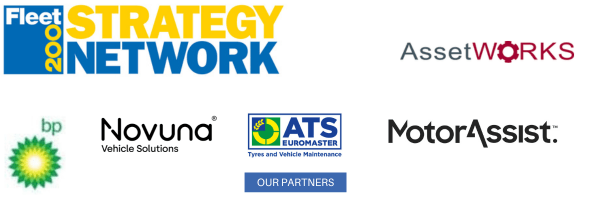




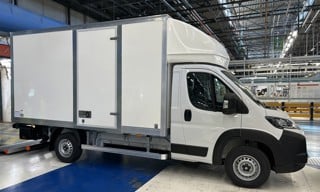
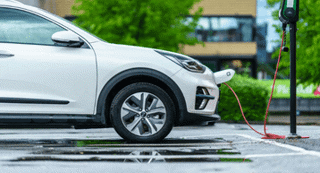
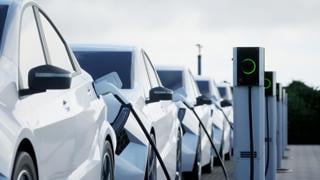

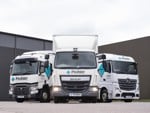



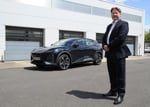

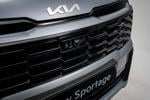

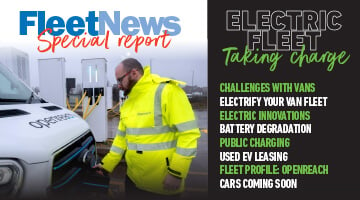
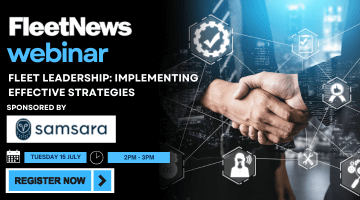

Login to comment
Comments
No comments have been made yet.